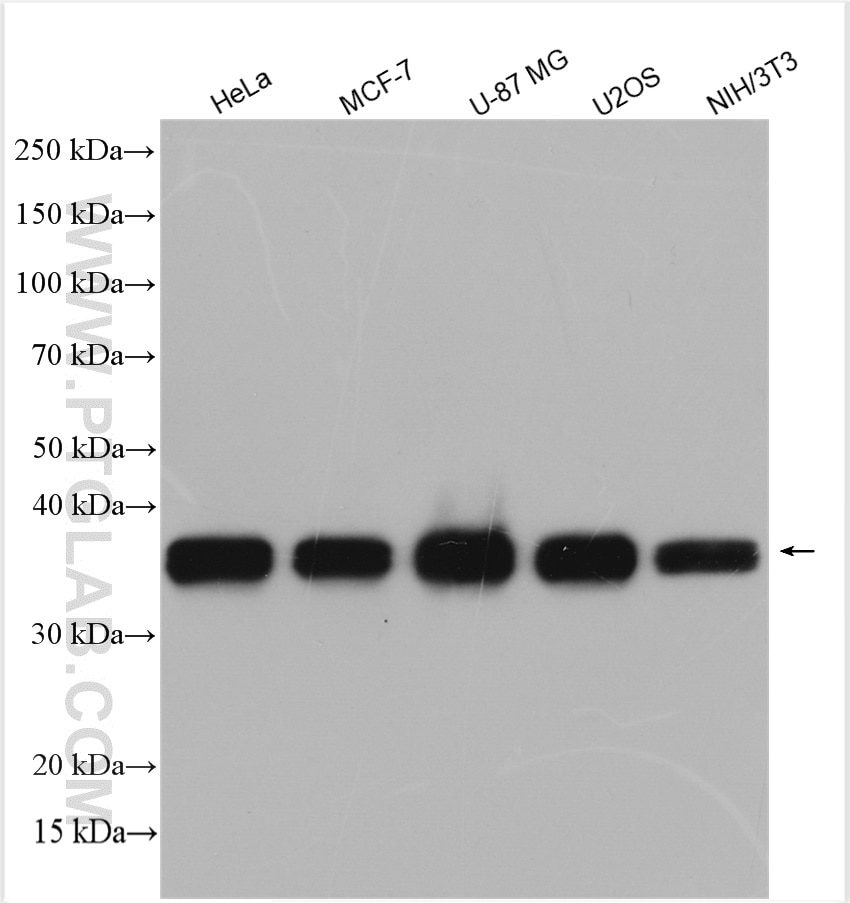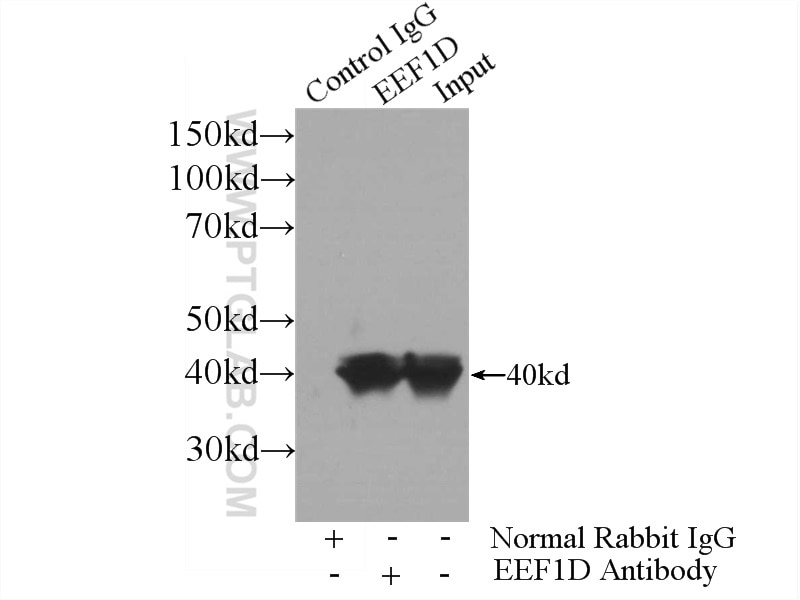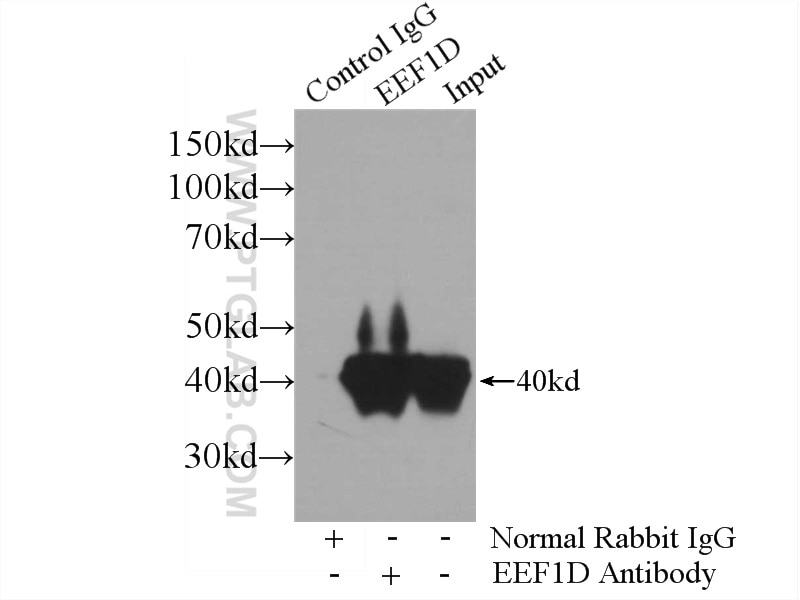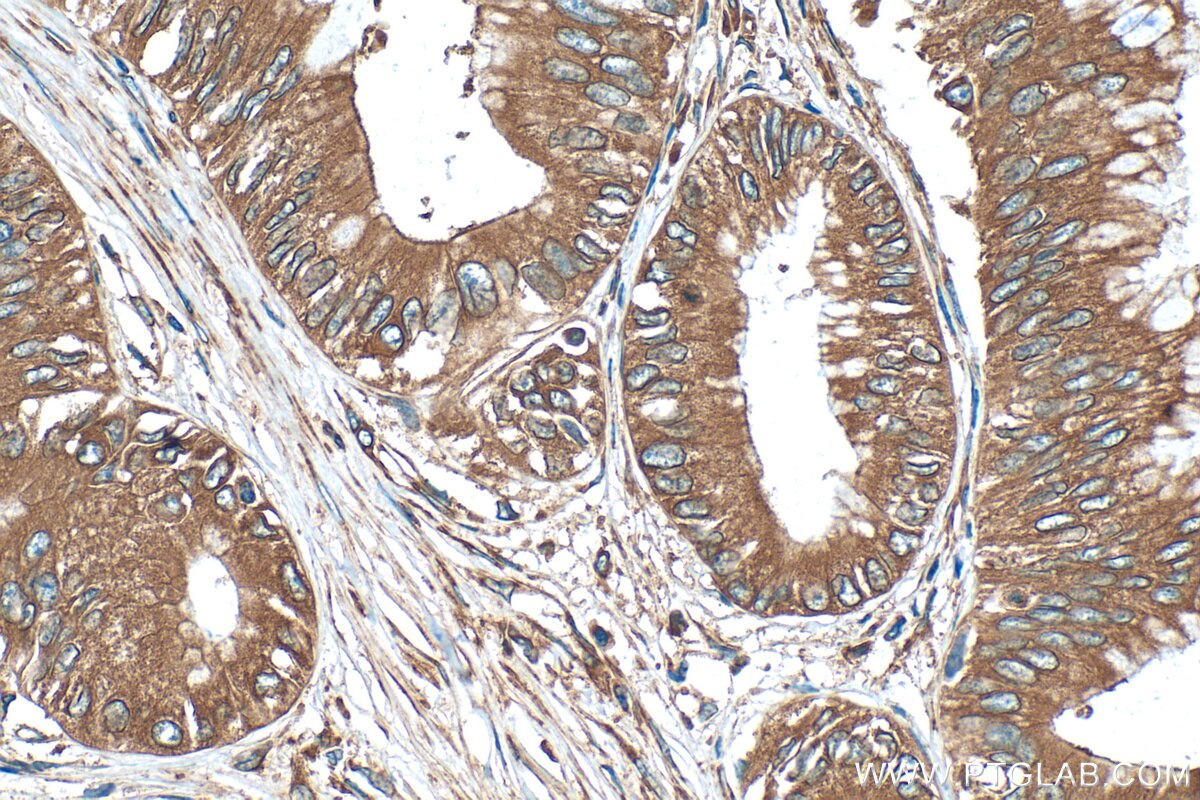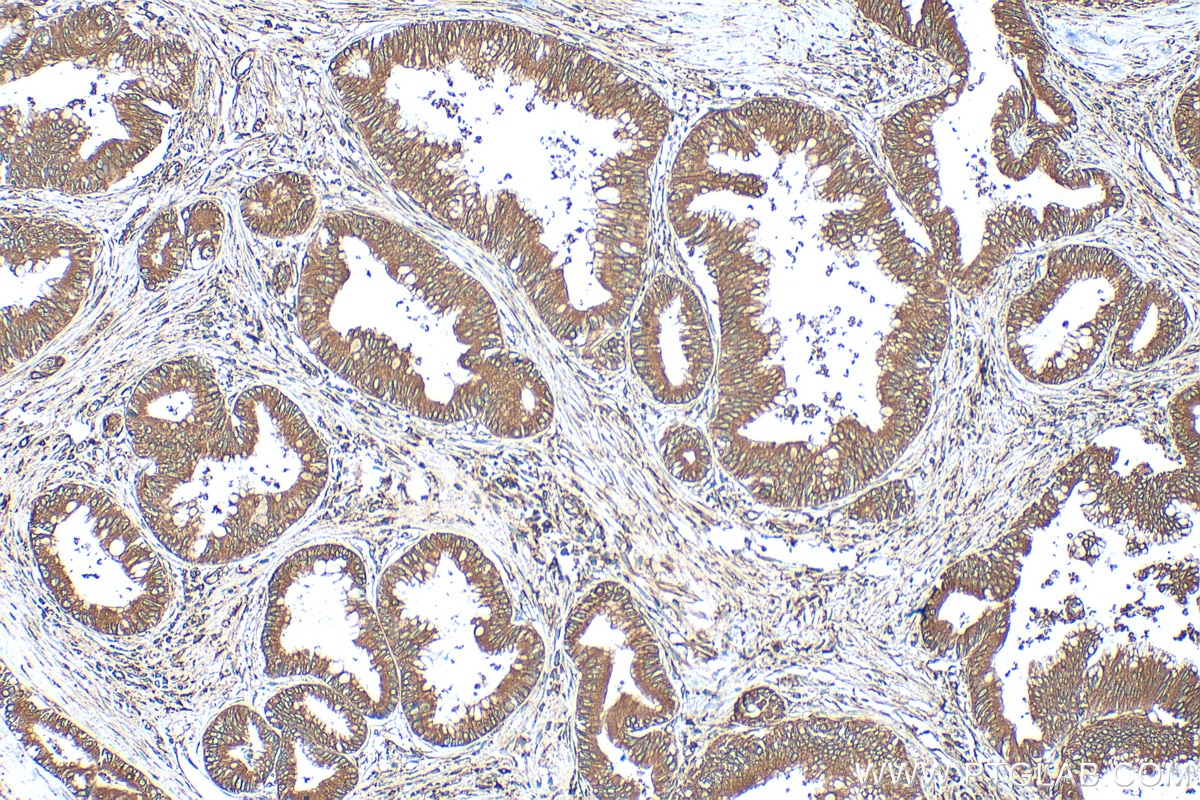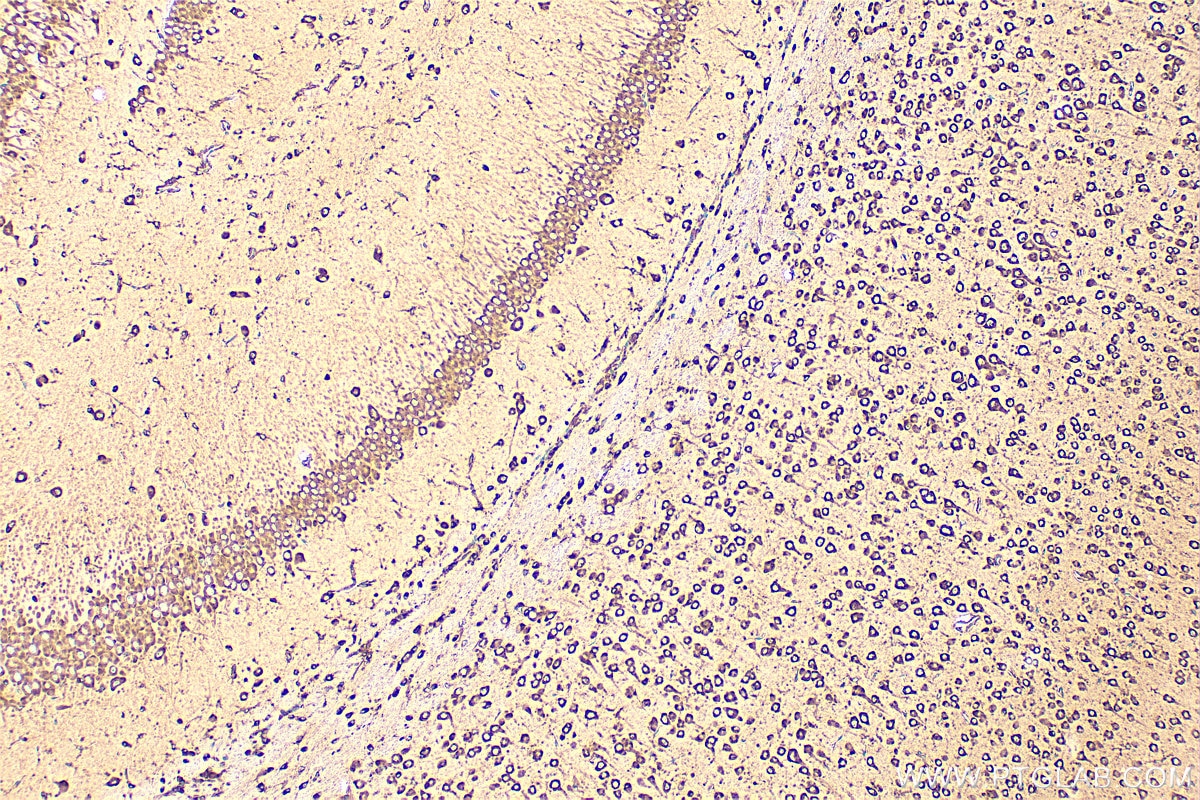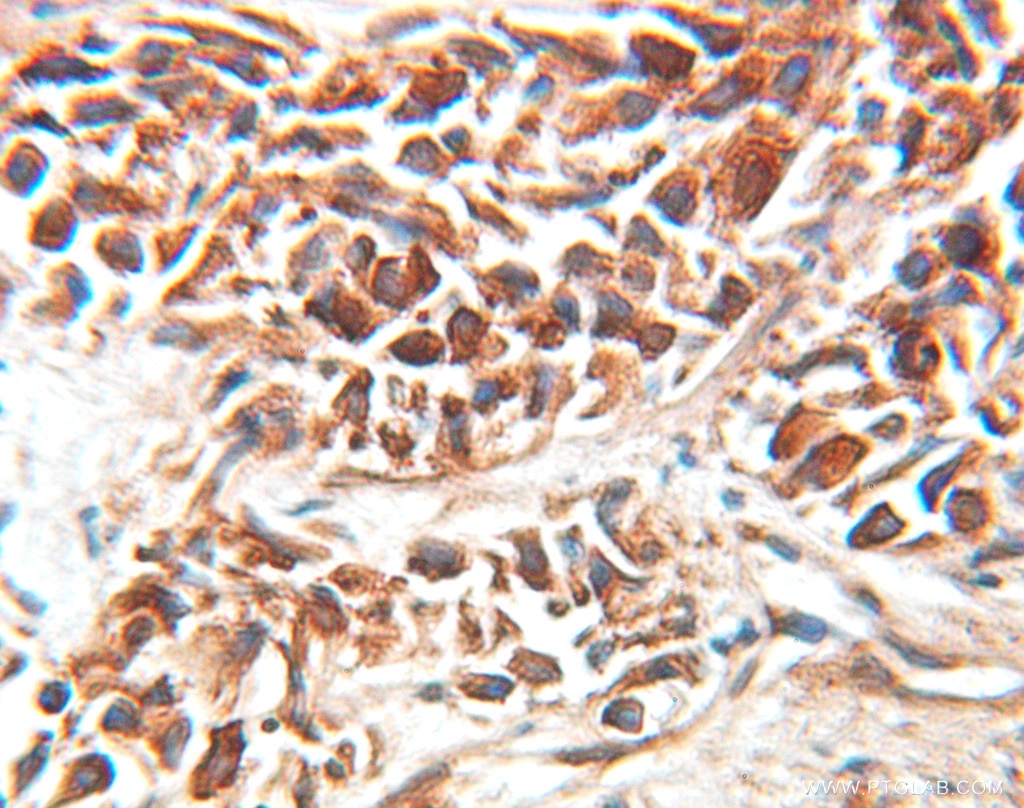Validation Data Gallery
Tested Applications
| Positive WB detected in | HeLa cells, MCF-7 cells, U-87 MG cells, U2OS cells, NIH/3T3 cells |
| Positive IP detected in | HeLa cells |
| Positive IHC detected in | human pancreas cancer tissue, human prostate cancer tissue, mouse brain tissue Note: suggested antigen retrieval with TE buffer pH 9.0; (*) Alternatively, antigen retrieval may be performed with citrate buffer pH 6.0 |
Recommended dilution
| Application | Dilution |
|---|---|
| Western Blot (WB) | WB : 1:5000-1:50000 |
| Immunoprecipitation (IP) | IP : 0.5-4.0 ug for 1.0-3.0 mg of total protein lysate |
| Immunohistochemistry (IHC) | IHC : 1:50-1:500 |
| It is recommended that this reagent should be titrated in each testing system to obtain optimal results. | |
| Sample-dependent, Check data in validation data gallery. | |
Published Applications
| KD/KO | See 2 publications below |
| WB | See 8 publications below |
| IHC | See 1 publications below |
| CoIP | See 1 publications below |
Product Information
10630-1-AP targets EEF1D in WB, IHC, IP, CoIP, ELISA applications and shows reactivity with human, mouse, rat samples.
| Tested Reactivity | human, mouse, rat |
| Cited Reactivity | human, mouse, rat |
| Host / Isotype | Rabbit / IgG |
| Class | Polyclonal |
| Type | Antibody |
| Immunogen |
CatNo: Ag0983 Product name: Recombinant human EEF1D protein Source: e coli.-derived, PGEX-4T Tag: GST Domain: 347-647 aa of BC007847 Sequence: SHRPGPRSGLSVSSLRPNRKMATNFLAHEKIWFDKFKYDDAERRFYEQMNGPVAGASRQENGASVILRDIARARENIQKSLAGSSGPGASSGTSGDHGELVVRIASLEVENQSLRGVVQELQQAISKLEARLNVLEKSSPGHRATAPQTQHVSPMRQVEPPAKKPATPAEDDEDDDIDLFGSDNEEEDKEAAQLREERLRQYAEKKAKKPALVAKSSILLDVKPWDDETDMAQLEACVRSIQLDGLVWGASKLVPVGYGIRKLQIQCVVEDDKVGTDLLEEEITKFEEHVQSVDIAAFNKI 相同性解析による交差性が予測される生物種 |
| Full Name | eukaryotic translation elongation factor 1 delta (guanine nucleotide exchange protein) |
| Calculated molecular weight | 31 kDa |
| Observed molecular weight | 35-40 kDa |
| GenBank accession number | BC007847 |
| Gene Symbol | EEF1D |
| Gene ID (NCBI) | 1936 |
| RRID | AB_2230993 |
| Conjugate | Unconjugated |
| Form | |
| Form | Liquid |
| Purification Method | Antigen affinity purification |
| UNIPROT ID | P29692 |
| Storage Buffer | PBS with 0.02% sodium azide and 50% glycerol{{ptg:BufferTemp}}7.3 |
| Storage Conditions | Store at -20°C. Stable for one year after shipment. Aliquoting is unnecessary for -20oC storage. |
Background Information
EEF1D, also named as EF1D and EF 1 delta, belongs to the EF-1-beta/EF-1-delta family. It is a subunit of the elongation factor-1 complex, which is responsible for the enzymatic delivery of aminoacyl tRNAs to the ribosome. EF-1-beta and EF-1-delta stimulate the exchange of GDP bound to EF-1-alpha to GTP. EEF1D is phosphorylated upon DNA damage, probably by ATM or ATR. The calculated molecular weight of EEF1D is a 31 kDa, but the modified protein is about 35-40 kDa. ( PMID: 21936567 )
Protocols
| Product Specific Protocols | |
|---|---|
| IHC protocol for EEF1D antibody 10630-1-AP | Download protocol |
| IP protocol for EEF1D antibody 10630-1-AP | Download protocol |
| WB protocol for EEF1D antibody 10630-1-AP | Download protocol |
| Standard Protocols | |
|---|---|
| Click here to view our Standard Protocols |
Publications
| Species | Application | Title |
|---|---|---|
Cell Chem Biol A photoaffinity labeling strategy identified EF1A1 as a binding protein of cyclic dinucleotide 2'3'-cGAMP. | ||
EMBO Rep Transformation of eEF1Bδ into heat-shock response transcription factor by alternative splicing.
| ||
J Exp Clin Cancer Res EEF1D overexpression promotes osteosarcoma cell proliferation by facilitating Akt-mTOR and Akt-bad signaling.
| ||
Front Mol Biosci Heat Shock-Induced Dephosphorylation of Eukaryotic Elongation Factor 1BδL by Protein Phosphatase 1. | ||
Int J Biochem Cell Biol The alteration of protein profile induced by cigarette smoking via oxidative stress in mice epididymis. | ||
Proteomics Pulmonary pressure reduction attenuates expression of proteins identified by lung proteomic profiling in pulmonary hypertensive rats. |

